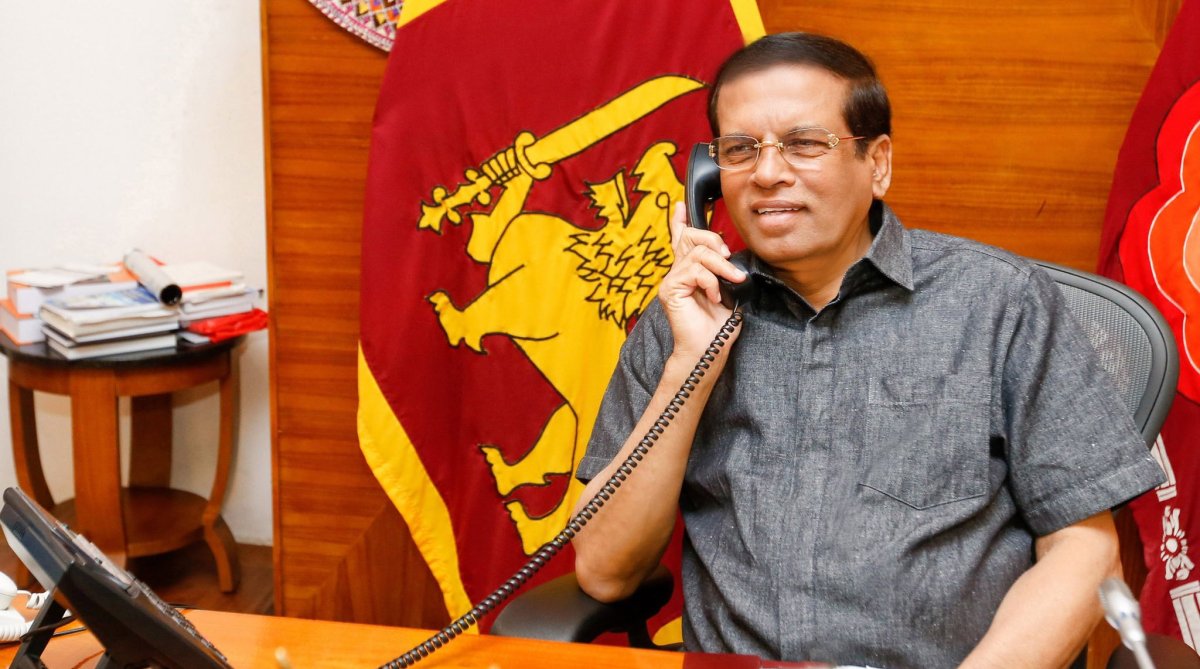Justice eludes Sri Lanka’s Tamils
On October 6, the United Nations Human Rights Commission (UNHRC) passed a resolution against Sri Lanka with 20 countries voting in favour, 20 against and seven abstaining.

Sri Lanka President Maithripala Sirisena (Photo: Twitter/@MaithripalaS)
The first unconstitutional transfer of power in Sri Lanka’s independent history took place by the swearing-in of Mahinda Rajapaksa, former President, as Prime Minister, by his successor Maithripala Sirisena on 26 October while the constitutionally appointed Prime Minister Ranil Wickremesinghe was still in office, plunging the nation in its worst political crisis. First, the President’s secretariat announced his withdrawal from the United People’s Freedom Alliance from the government. Then he announced Wickremesinghe has been sacked. Under Article 42(4) of the Constitution, the President could only appoint Prime Minister.
The 19th Amendment of the Constitution, enacted after Sirisena became President, says the Prime Minister ceases to hold office by death, resignation by ceasing to be a member of Parliament or if the government as a whole has lost the confidence of Parliament by a defeat of the President’s address, the budget or a vote of no-confidence. The President can appoint another Prime Minister only when the serving Prime Minister has lost office in any of the above ways.
The Speaker of Parliament is on the side of Wickremesinghe. The President prorogued Parliament till 16 November lest the in situ Prime Minister proved his majority in Parliament as he did in April last and to give ample time to Rajapaksa to rustle up a majority through horse-trading. And a new Cabinet of 16 sworn-in quickly, keeping all loyalists of Wickremesinghe out. Entrenched in Temple Trees, office-cum-residence of the Prime Minister, Wickremesinghe refused to vacate the place and sought UN peace-keeping force to guard his place, even as Sirisena started withdrawing security from Temple Trees. The entire operation was carried out in total secrecy. On 29 October, Rajapaksa assumed office as Prime Minister, creating melodramatic scenes in Colombo. With two functioning Prime Ministers, Sri Lanka can boast of becoming a nation like no other.
Advertisement
The UPFA was formed in 2015 by the two major political parties that ruled the country alternatively since independence, the Sri Lanka Freedom Party and the United National Party, to prevent Rajapaksa of the SLFP from re-election as President. The people voted overwhelmingly in favour of the alliance and its common candidate Sirisena for President. That mandate has ceased with the weekend coup in Colombo. The National Unity Government of 2015 is dead. If the Sirisena-Rajapaksa combine has parliamentary majority,Wickremeshinghe could have been removed by the constitutional path.
The only honourable course open is dissolution of Parliament and holding of fresh election. Even if Parliament is summoned immediately and Rajapaksa is able to demonstrate majority support, he would be lacking in legitimacy because this House was elected on an anti-Rajapaksa mandate. Relationship between Sirisena and Wickremesinghe has never been cordial. It sank to a new low after his recent visit to New Delhi.
Advertisement